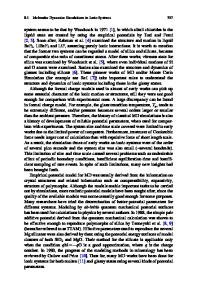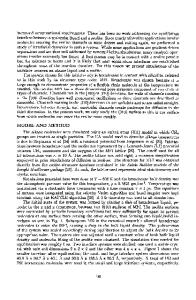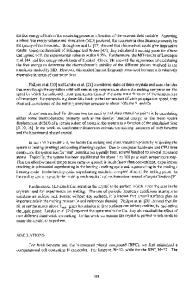Electrode surface modification of graphene-MnO 2 supercapacitors using molecular dynamics simulations
- PDF / 1,910,253 Bytes
- 10 Pages / 595.276 x 790.866 pts Page_size
- 45 Downloads / 377 Views
ORIGINAL PAPER
Electrode surface modification of graphene-MnO2 supercapacitors using molecular dynamics simulations Musanna Galib 1 & Mohammad Mozammal Hosen 2 & Joyanta K. Saha 3 & Md. Mominul Islam 4 & Shakhawat H. Firoz 5 Md. Ashiqur Rahman 1
&
Received: 23 March 2020 / Accepted: 21 July 2020 # Springer-Verlag GmbH Germany, part of Springer Nature 2020
Abstract In this study, molecular dynamics (MD) simulations have been performed to explore the variation of ion density and electric potential due to electrode surface modification. Two different surface morphologies, having planer and slit pore with different conditions of surface charge, have been studied for graphene-MnO2 surface using LAMMPS. For different pore widths, the concentration of ions in the double layer is observed to be very low when the surface of the graphene-MnO2 electrode is charged. With a view to identify the optimal pore size for the simulation domain considered, three different widths for the nano-slit type pores and the corresponding ion-ion interactions are examined. Though this effect is negligible for pores with 9.23 and 3.55 Å widths, a considerable increase in the ionic concentration within the 7.10 Å pores is observed when the electrode is kept neutral. The edge region of these nano-slit pores leads to effective energy storage by promoting ion separation and a significantly higher charge accumulation is found to occur on the edges compared to the basal planes. For the simulation domain of the present study, partition coefficient is maximum for a pore size of 7.10 Å, indicating that the ions’ penetration and movement into nano-slit pores are most favorable for this optimum pore size for MnO2-graphene electrodes with aqueous NaCl electrolyte. Keywords Molecular dynamics . Supercapacitor . Graphene . MnO2 . Electrode modification
Introduction Remarkable growth in the field of electronic equipment such as portable communication devices and hybrid vehicles has induced an increasing demand for high-power energy in a relatively compact volume and weight. Though traditional
* Shakhawat H. Firoz [email protected] * Md. Ashiqur Rahman [email protected] 1
Department of Mechanical Engineering, Bangladesh University of Engineering and Technology, Dhaka 1000, Bangladesh
2
Chemistry Division, Atomic Energy Centre, Bangladesh Atomic Energy Commission, Dhaka 1000, Bangladesh
3
Department of Chemistry, Jagannath University, Dhaka 1100, Bangladesh
4
Department of Chemistry, University of Dhaka, Dhaka 1000, Bangladesh
5
Department of Chemistry, Bangladesh University of Engineering and Technology, Dhaka 1000, Bangladesh
energy storage system such as batteries has energy density in the order of 180 Wh kg−1, unfortunately they suffer from slow power delivery [1]. On the other hand, ‘electrochemical capacitors’ (EC) or ‘supercapacitors’ can provide some excellent characteristics such as long cycle life (> 105), high specific power (10 kW kg−1), and fast charging/discharging [2]. Presently, supercapacitors are widely used in e
Data Loading...











